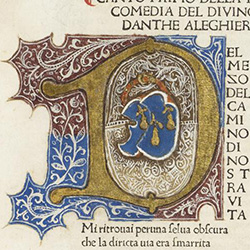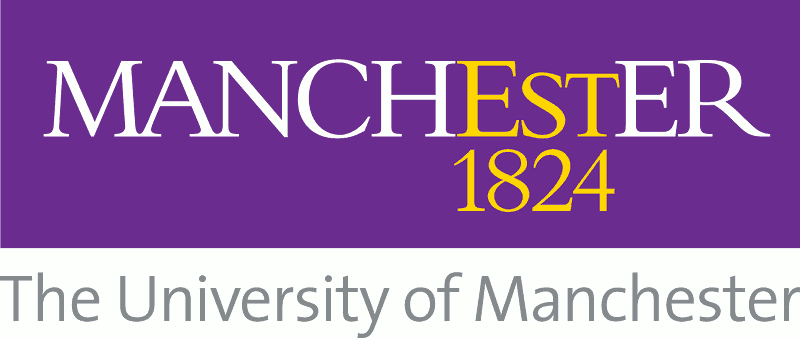Dante Treasures

The John Rylands Research Institute and Library holds one of the finest collections of Dante Alighieri’s work in the world, containing fourteen of the fifteen incunable editions of the Divina Commedia, all but two of the sixteenth-century editions of his works, and a number of significant manuscripts. This mini-collection presents some of our finest copies of Dante Alighieri’s works: three early editions printed in the fifteenth century, and a selection of significant manuscripts, which allow twenty-first century readers to unlock the ways in which Dante was read and used in the fifteenth and sixteenth centuries through exploration of the mise en page, decoration, marginalia and other annotations.
Printed within four years of each other, and produced at a time when editorial conventions in the new medium of print were still extremely fluid, the three printed texts express very different approaches to and intentions for Dante’s poem in their format, layout, and accompanying material. The earliest, 1477 Venice edition (9383), was the first Dante edition to include a critical apparatus, including a commentary and life of the author. Produced between 1477 and 1478, the Milan edition (19561) contains a range of paratextual elements aimed at a courtly audience, with a more humanistic commentary. The 1481 Florence edition (17280), a landmark in early Italian printing, was the first to include a commentary written for the specific publication and to include illustrations. These three editions are in constant dialogue with each other; as competing scholarly editions of Dante, as localised expressions of Italian vernacular culture, and evidence for the linguistic debates which were emerging at the time. The three Dante editions were digitised as part of the Manchester Digital Dante Project (2009-10), a British Academy-funded project led by Dr. Guyda Armstrong, Department of Italian, University of Manchester.
The three manuscripts include one of the earliest dated manuscripts of Dante’s Divina Commedia (Italian MS 49), a fine fifteenth century example (Italian MS 2) and an incomplete sixteenth century manuscript of the text, which omits the Paradiso (Italian MS 48).


